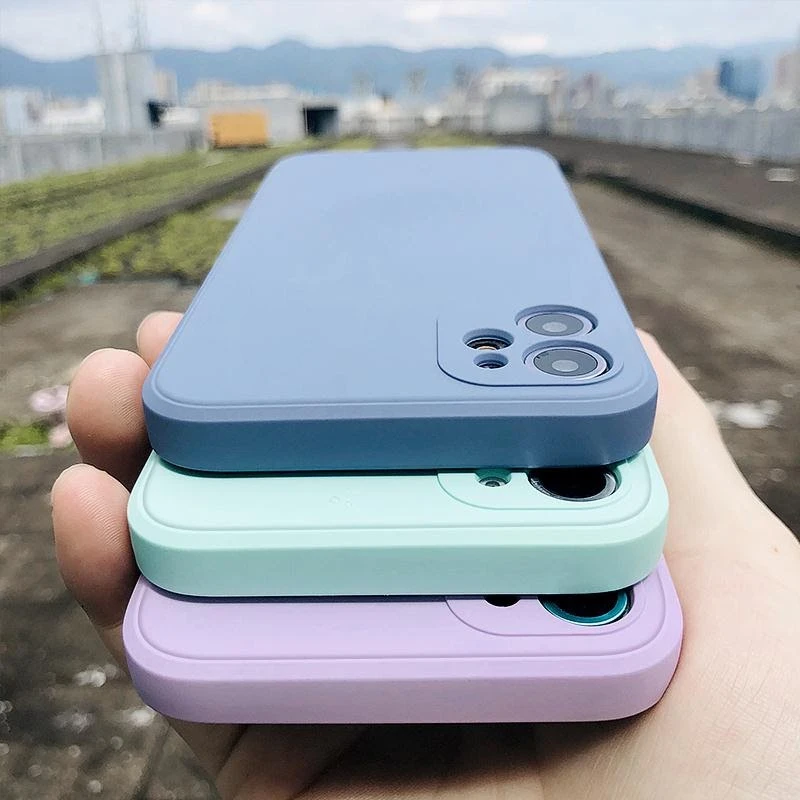
Mobile devices have taken over the human population. There are 8.5 billion mobile device connections around the world, compared to our population of 7.6 billion people.
While this sounds like the start of a sci-fi horror film, it’s actually a good sign if you want to sell phone accessories online.
Custom phone cases, in particular, are easy to source and appeal to people who are looking to inject some individuality or extra functionality into the one device they can’t live without.
Building a business around making and selling your own phone cases comes with a variety of benefits:
- It’s easy to hold inventory and ship, due to their small size.
- They’re relatively low cost to produce.
- You can sell them both online and in an offline kiosk.
- You can print on demand to start with a lower risk or buy in bulk for better margins.
- Every new phone model offers a new opportunity to cater to the 44% of smartphone owners who upgrade every two years.
As with any business where the barrier to entry is low, there’s going to be competition. However, all you need to succeed is a piece of this massive market.
The following is a guide that answers common questions about starting a phone case business, such as:
- What types of phone cases are there?
- Where do I get unique designs for phone cases?
- How do I know what phone cases/designs will be popular?
- Where can I sell my phone cases?
If making and selling phone cases sounds like a compelling online business idea but you don’t know where to start, you’re in the right place. Check our how to start a business guide to get started.
Is a phone case business profitable?

A phone case business is a profitable way to make money online. The market for phone cases was worth $10 billion in 2020 and is expected to grow 7.5% each year until 2025, reaching $35.5 billion. It’s clear there will be no lack of customers for your phone case business.
Phone cases are also easy to handle from a management perspective. They don’t break often, so there are fewer returns to deal with. They typically are lightweight and cheap to ship and often have decent profit margins. You can find phone cases for as little as $5 on a dropshipping site like Oberlo and sell them for $10+—an easy 50% profit.
The best part? It doesn’t take much upfront investment to start a phone case business. You can create an online store in minutes, connect it to Oberlo, and go live in a few hours.
Things to consider before starting a phone case business
Before you get to creating your own phone cases, there are a few things you’ll need to know, like the types of phone cases out there and which phones you should support.
Types of phone cases
Some phone cases are more practical, while others are more visually appealing. Some offer protection, while others are more like a second “skin” than a case.
There are a multitude of options, but here are some of the most common types to get you started.
Slim and gel cases

Slim cases are on the thinner side and let you add an eye-catching design and some additional grip to a phone, often through a flexible, rubbery silicone gel material.
These are some of the cheapest phone cases you can produce and customize with designs, especially if you want to print them on demand (more on that later).
Bumper cases

Unlike slim phone cases, these cases usually only cover the sides/border of your phone (they can also come with an additional piece for protecting the back from scratches) and are often made of a harder, shock-resistant material to protect your phone from dings and scratches.
Folio or wallet cases

Folio cases have a cover that folds over the front of your phone to protect the screen from dust and scratches and give the phone the appearance of a small notebook.
Some even have wallet-like features, such as the ability to store cash or credit cards, while others can be turned into a stand to prop up your phone.
You’ll typically find these in a leathery material, and they likely will cost more than slim cases but also appeal to more practical consumers.
Tough cases

Many people look at having a phone case less as an aesthetic choice and more as a way to protect the hundreds of dollars they invested in their phone should they ever drop it.
Tough cases are bulkier and add more weight to a phone but afford customers greater protection.
It’s important to recognize this when you write your product descriptions for tough phone cases, as anything from drop tests to details about water resistance can help give customers peace of mind.
Battery cases

Battery life seems to be a problem regardless of what phone you have these days.
While they’re more expensive than most phone cases, battery cases are also very practical and offer a lot of utility for those moments when we wish we had just a bit more juice.
Since these cases not only protect your phone but provide some extra charge, battery cases are a good companion for models of phones where battery life is a constant complaint.
Silicone cases

Silicone is another inexpensive option for selling phone cases online. Silicone cases are soft and durable and also work well in high temperatures. Silicone phone cases provide a softer touch for customers. You can find these on dropshipping sites like Oberlo for around $2 per case.
Choosing which devices to focus on
It’s not just a matter of deciding what kind of phone cases you want, but what kinds of phones you want to support.
However, this can also offer an opportunity to dig into specific niches based on phone models. If you can foresee a need for cases for upcoming phones or spot any underserved smartphone types, there may also be an opportunity there.
Some devices you may want to consider are:
iPhone models
- iPhone 6
- iPhone 7
- iPhone 8
- iPhone X
- iPhone 11
- iPhone 12
Samsung Galaxy models
- Galaxy S
- Galaxy A
Xiaomi models
- Mi
- Poco
- Redmi
Do some basic keyword research in Google’s Keyword Planner or KWFinder to get a look at search volume as a reflection of demand for cases for specific types of phones. If you plan on using Google Ads to sell your products, it’s definitely worth looking into this in advance.
How to make your own phone case business
The best phone case businesses didn’t become successful overnight. Even with some trial and error, these brands followed a business plan and grew at a sustainable pace. Use this step-by-step guide to structure your own business model:
- Identify a need in the market
- Develop a business plan
- Identify your target market
- Start designing
- Source your phone cases
- Choose a brand name and logo
- Choose a price point
- Create your online store
- Market your business
1.Identify a need in the market
A successful phone case business won’t succeed on effort alone. Think about a niche in the market that no one is fulfilling yet. Is it a case that’s best for outdoor adventures? Is it a line of cases designed by local artists in your region? Figure out what phone cases should exist that currently aren’t being offered by big brands.
2.Develop a business plan
A business plan guides your entire journey when creating an online phone case business. It can help clarify your strategy, identify roadblocks, understand what you’ll need in terms of resources, and assess your business idea before you launch it.
Ask yourself: what is the ultimate goal for this product? Do you want to be a brand name sold in Nordstrom or Urban Outfitters? Do you want to create a premium brand sold in boutique shops? Do you want to start an ecommerce store and sell to your own following?
Identify your business goals and keep them in mind as you build out your phone case brand.
3.Identify your target audience
Determining a target audience is key to selling products online successfully. Your goal isn’t just to identify a phone case or accessory that should exist, but also find a target market for the product. After all, your design and planning work is of little use if there’s no buyers for your product.
Consider the pros and cons of targeting certain demographics. For example, young people tend to be trendy and are more receptive to viral marketing and word of mouth. They also have limited funds. Middle-aged buyers may be able to afford more expensive phone cases, but also may be less concerned with being trend-conscious and prefer particular styles.
4.Start designing
Design will be your biggest differentiator when selling custom phone cases online. It’s also where you can let your creativity shine. The first batch you release to the public will speak to your brand, so make sure you craft something awesome to put your stake in the ground.
There are two ways to go about designing your phone cases:
1.Work with designers and artists. Design communities like Dribbble are great places to shop around for designers based on the aesthetic you’re looking for. Or, if you’re looking for cost-effective designs, you can always find them on Fiverr. Try to look specifically for designers that do custom phone cases.
2.Design your own cases. You can also create your own design mock-ups in Photoshop or Photopea, and many phone case print-on-demand services like CaseApp and Printful also have phone case mock-up generators you can use.
5.Source your phone cases
Once you’ve got designs you feel good about, it’s time to bring them to life. Unless you’re willing to invest thousands in your own printing equipment, you have three main options when it comes to getting your phone cases made.
- Find a manufacturer
- Use a print-on-demand service
- Dropship existing phone cases
6.Choose a brand name and logo
If it looks like your cellphone cases can be manufactured at a reasonable cost, you’re ready to create your public image. This starts with choosing a business name and logo.
Customers like brands with a good story, so try weaving yours into your brand name, logo, and website. If you’re manufacturing phone cases, you’ll want to have this ready before the first batch is finished. Then you can start selling your cases right away.
7.Choose a price point
Pricing your phone cases is one of the keystone decisions you need to make. It impacts nearly every area of your business, from cash flow to profit margins to deciding what expenses you can afford.
Your pricing strategy ties into understanding your audience. Choose a price point that covers your manufacturing costs, but doesn’t deter the customers you’ll need to launch a successful phone case business.
8.Create your online store
Next up: Where can you sell phone cases? A good place to start is by building an online store.
Now, this sounds like a challenging task versus listing your products on online selling sites. These marketplaces can help build brand awareness during the early stages, but you’ll want your own digital home in the long run. It’ll help maintain control of your brand and retain more profits.
9.Market your business
Now that you’ve figured out your market, your product, and your supply chain, it’s time to figure out how and where to sell your phone cases.
While marketplaces like Etsy and Amazon are good places to list your phone cases, you can also open an online store for own your brand, expand your marketing efforts, and build a long-term business.
Launching your own phone case startup
Don’t get bogged down by the competition for phone cases. Like any other competitive market, what you need to focus on is appealing to the right niche and getting your products in front of these people. Start your business as a side hustle, then learn and grow it into a full-out small business.
Over time, you can figure out winning designs and phone cases, as well as ways to source them to increase your margins so you can double down on selling them.
| M | T | W | T | F | S | S |
|---|---|---|---|---|---|---|
| 1 | 2 | 3 | 4 | 5 | 6 | 7 |
| 8 | 9 | 10 | 11 | 12 | 13 | 14 |
| 15 | 16 | 17 | 18 | 19 | 20 | 21 |
| 22 | 23 | 24 | 25 | 26 | 27 | 28 |
| 29 | 30 | 31 | ||||
Recent Posts
- Ultimate Guide to UV Printing: Insider Tips and Tricks
- Before You Invest: Choosing a Large Format Flatbed Printer
- Maximizing Brilliance: Mastering UV Printer Settings for Optimal Media Reflectivity
- The advantages of using a WER UV printer for large format printing (2)
- Achieve Stunning Results in Home Décor and Architectural Design with UV Printer
Recent Comments
Archives
- January 2025
- November 2024
- September 2024
- March 2024
- December 2023
- November 2023
- October 2023
- May 2023
- March 2023
- February 2023
- January 2023
- December 2022
- November 2022
- October 2022
- September 2022
- February 2022
- January 2022
- December 2021
- November 2021
- October 2021
- September 2021
- August 2021
- July 2021
- June 2021
- May 2021
- April 2021
- March 2021
- February 2021
- January 2021
- December 2020
- November 2020
- October 2020
- September 2020
- August 2020
- July 2020
- June 2020
- May 2020
- April 2020
- March 2020
- February 2020
- January 2020
- December 2019
- November 2019
- October 2019
- September 2019
- August 2019
- July 2019
- June 2019
- May 2019
- April 2019
- March 2019
- February 2019
- January 2019
- December 2018
- November 2018
- October 2018
- September 2018
- August 2018
- July 2018
- June 2018
- May 2018
- April 2018
- March 2018
- February 2018
- January 2018
- December 2017
- July 2016
- June 2016
Recent Posts
- Ultimate Guide to UV Printing: Insider Tips and Tricks
- Before You Invest: Choosing a Large Format Flatbed Printer
- Maximizing Brilliance: Mastering UV Printer Settings for Optimal Media Reflectivity
- The advantages of using a WER UV printer for large format printing (2)
- Achieve Stunning Results in Home Décor and Architectural Design with UV Printer